Wigwam Anniversary
This coming Sunday is a date which should be considered a minor holiday in the history of roadside architecture.
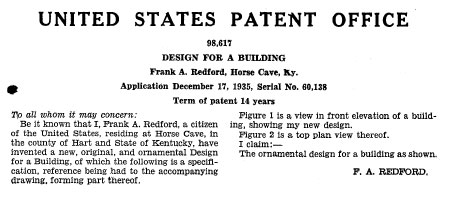
On February 18, back in 1936, Frank A. Redford of Horse Cave, Kentucky, was granted Design Patent # 98617 for what would become his Wigwam Village #1.
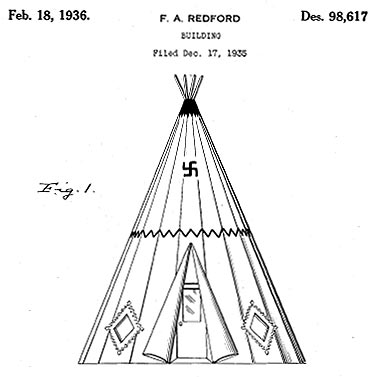
In these design drawings from the original patent application, you'll notice the swastika. Remember, this was 1936 and the symbol, already well-established in Native American (and other) cultures, was not yet associated with the Nazi party in the American mind.
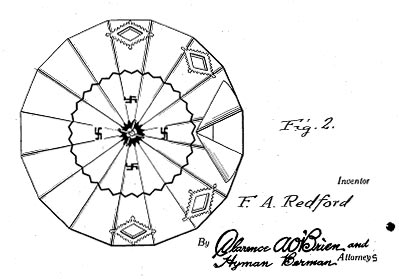
Still, being fully aware of this, I always experience a nanosecond of "what the?" when I see a swastika in pre-WWII design.

Wigwam Village #1 is long-gone, but it's closest living relative, Wigwam Village #2 (above) is still in business in Cave City, KY.
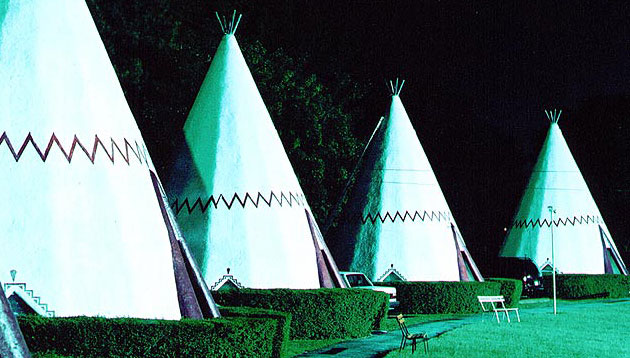
Notice that the zig-zag design has been maintained. Redford also built this one, and went on to exchange rights to use his design for revenue from coin-operated radios, resulting in the eventual existence of seven wigwam motels.
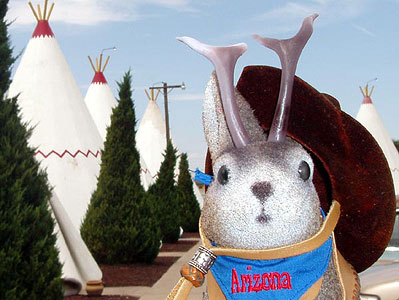
I wrote more about the history of wigwam motels when we visited one of the three surviving ones in Holbrook, Arizona.
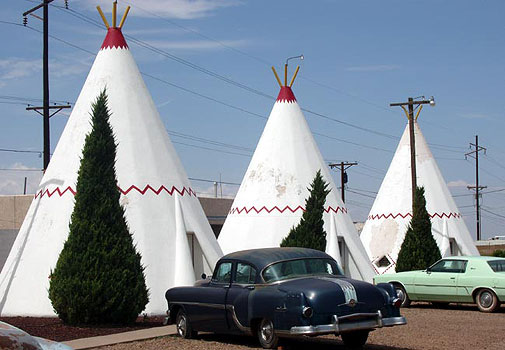
Here's another shot of Holbrook's Wigwam Motel, and a link to more photos of it. Note that just as with the one in Cave City, the zig-zag design is intact.
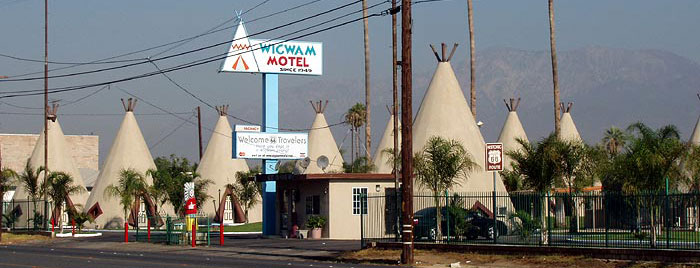
Eventually Redford retired to what is now Rialto, California and built the last wigwam motel, which, after a chain of other owners, is still going. The Rialto paint scheme uses beige rather than white, and omits the zig-zag.

One of our friends and traveling partners came up with what has become one of our catch-phrases: "When you can sleep in a wigwam, you should sleep in a wigwam. G'night!
Thanks to reader and fellow traveler Mark, who alerted us to the patent anniversary.

On February 18, back in 1936, Frank A. Redford of Horse Cave, Kentucky, was granted Design Patent # 98617 for what would become his Wigwam Village #1.

In these design drawings from the original patent application, you'll notice the swastika. Remember, this was 1936 and the symbol, already well-established in Native American (and other) cultures, was not yet associated with the Nazi party in the American mind.

Still, being fully aware of this, I always experience a nanosecond of "what the?" when I see a swastika in pre-WWII design.

Wigwam Village #1 is long-gone, but it's closest living relative, Wigwam Village #2 (above) is still in business in Cave City, KY.

Notice that the zig-zag design has been maintained. Redford also built this one, and went on to exchange rights to use his design for revenue from coin-operated radios, resulting in the eventual existence of seven wigwam motels.

I wrote more about the history of wigwam motels when we visited one of the three surviving ones in Holbrook, Arizona.

Here's another shot of Holbrook's Wigwam Motel, and a link to more photos of it. Note that just as with the one in Cave City, the zig-zag design is intact.

Eventually Redford retired to what is now Rialto, California and built the last wigwam motel, which, after a chain of other owners, is still going. The Rialto paint scheme uses beige rather than white, and omits the zig-zag.

One of our friends and traveling partners came up with what has become one of our catch-phrases: "When you can sleep in a wigwam, you should sleep in a wigwam. G'night!
Thanks to reader and fellow traveler Mark, who alerted us to the patent anniversary.


2 Comments:
I just wanted to let you know that I have been addicted to this site for weeks. I love the photos, the stories and most of all - Ace!
Keep up the good work, I can't wait to see what adventures are next.
i became interested becoz i saw the updoming movie of pocahontas.. i am intrigued by her story and how she contributed to american history.. i wanted to know if there are still alot of native americans living in west virginia.. -Kay from the Philippines
Post a Comment
<< Home